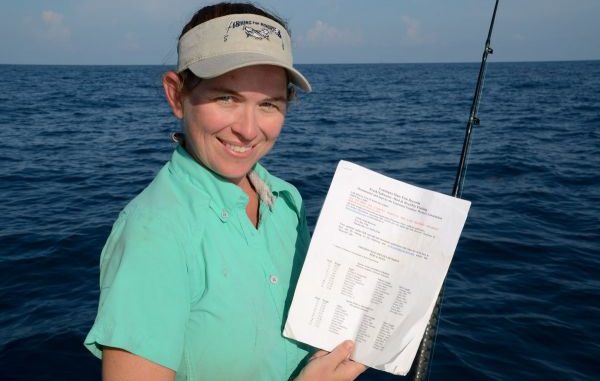
Amanda and Dennis Menard, and their families don’t need any excuses to go fishing, but they do a lot of things to make their fishing more fun.
When they began fishing in the Fishing for Memories benefit fishing rodeo, they noticed their kids got a kick out of seeing their names in print as winners.
Amanda took things a step further when she began paying attention to the Louisiana State Fish Records Program. The program, administered by the Louisiana Outdoor Writers Association, keeps a listing of the top 10 catches in each of 23 freshwater and 67 saltwater categories.
She quickly realized that the catches her family made were, surprisingly, often of record quality — but without knowledge of what the records were, no one on the boat paid much attention to them.
She quickly solved that.
Now, before each fishing trip, she downloads and prints the latest version of the fish records, as well as several blank applications.
Having the records on paper for ready reference has paid off: Their family currently holds eight top-10 spots, which has to be some kind of record in itself.
Amanda alone holds down third place in yellowtail snapper and eighth place in mangrove snapper.
Son Jimmie Boothe holds first place in Bermuda chub. Step-daughter Jeanne Menard holds third and 10th in blue runner and sixth in yellowtail snapper; step-son Dennis Menard III has the eighth place Bermuda chub and ninth place blue runner.
Amanda has found that it is surprisingly easy to get into the record books. The records program committee often adds new species categories, and some categories don’t yet have 10 entries, so any entry will place.
Even in the older or more-competitive categories, the luck of the draw has even casual fishermen often making record catches.
The records can easily be accessed searching online for “Louisiana Fish Records.”
Entering a fish takes a little bit or work, but is well worth it.
Each fish must be examined by a fisheries biologist to be sure the identification is correct and that the fish hasn’t been mutilated. Biologists used are typically Louisiana Department of Wildlife and Fisheries or university fisheries biologists.
The fish also must be weighed on certified scales. Most often, these are grocery-store scales, but larger fish often are taken to regularly inspected scales at major boat docks used for salt water rodeos.
It is important to note that two witnesses to the weighing must sign the application.
A clear photograph of the fish from head to tail, as well as the angler, and the rod and reel should accompany the application.